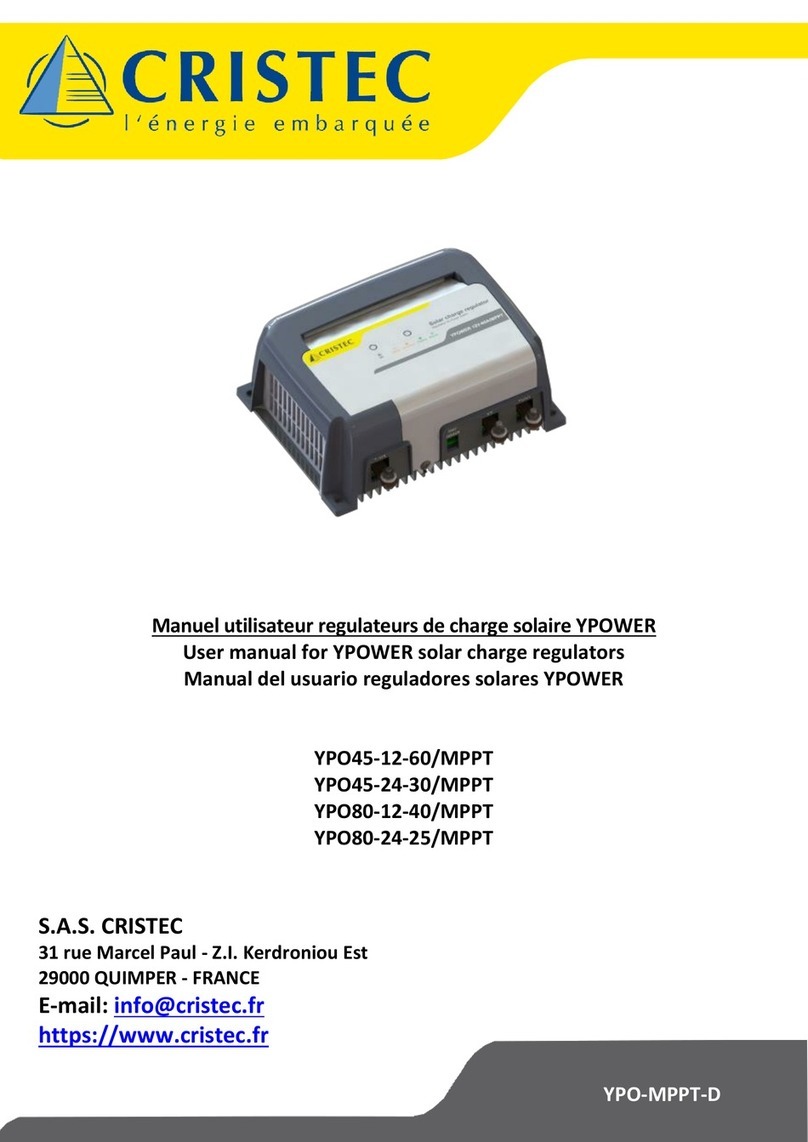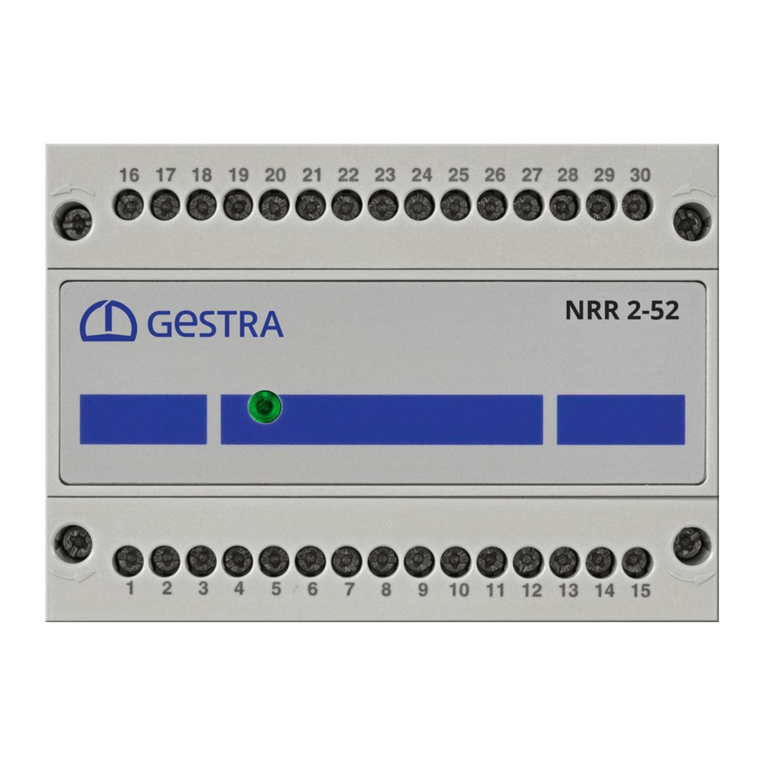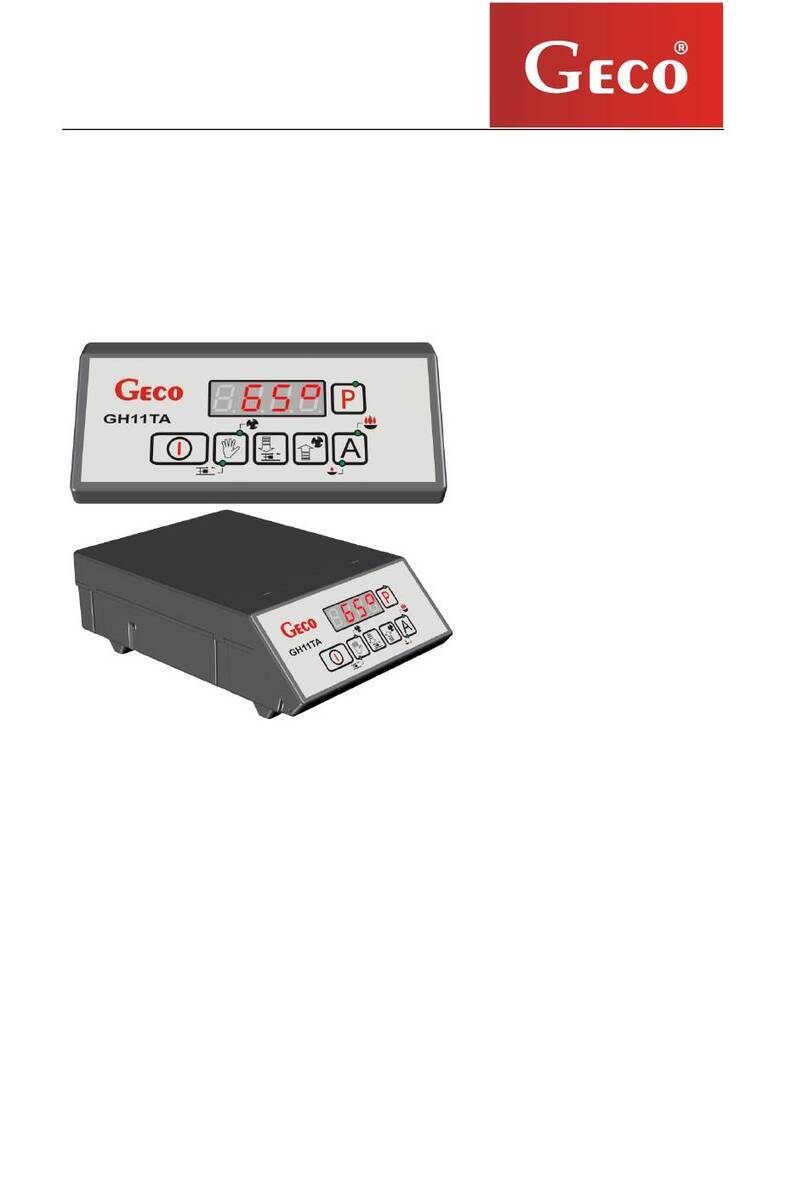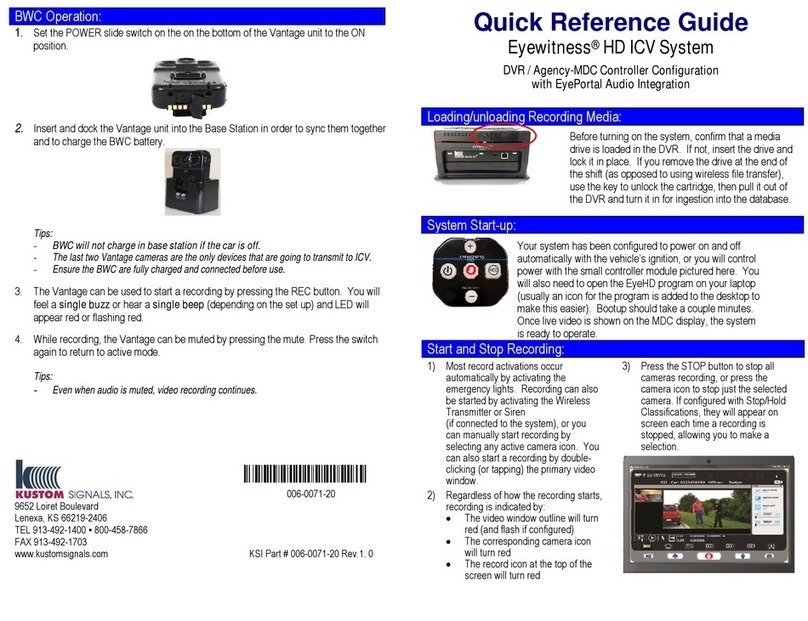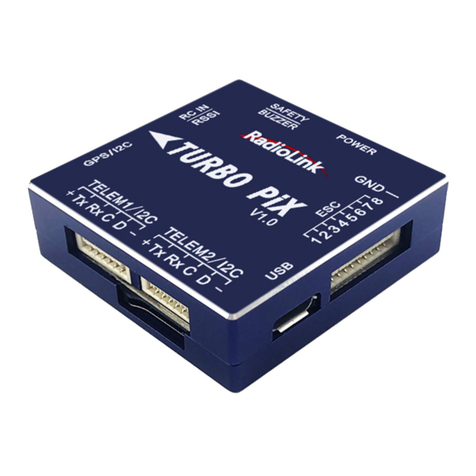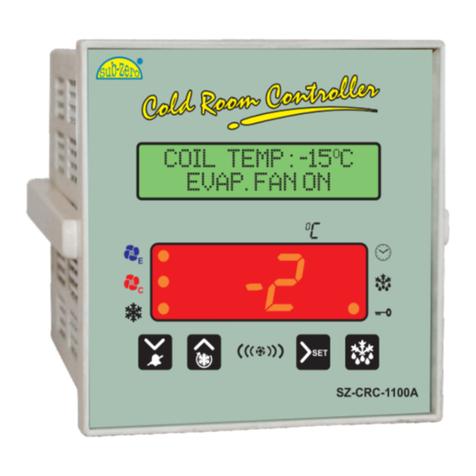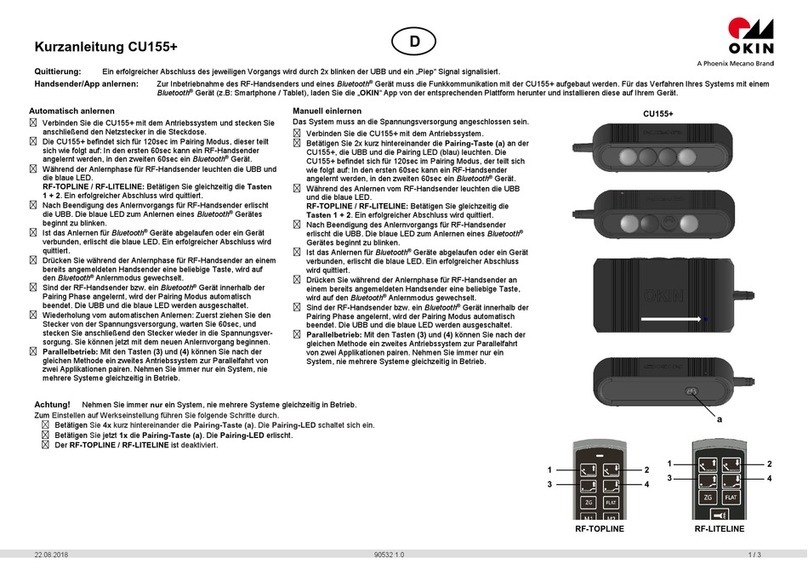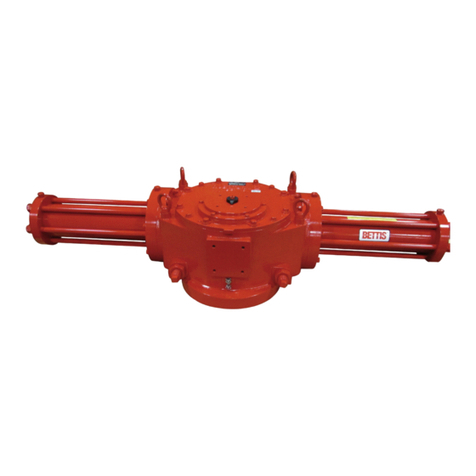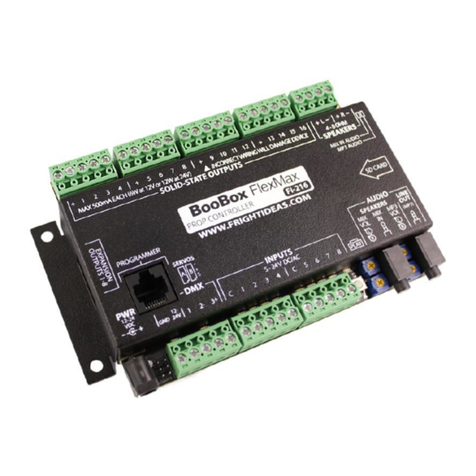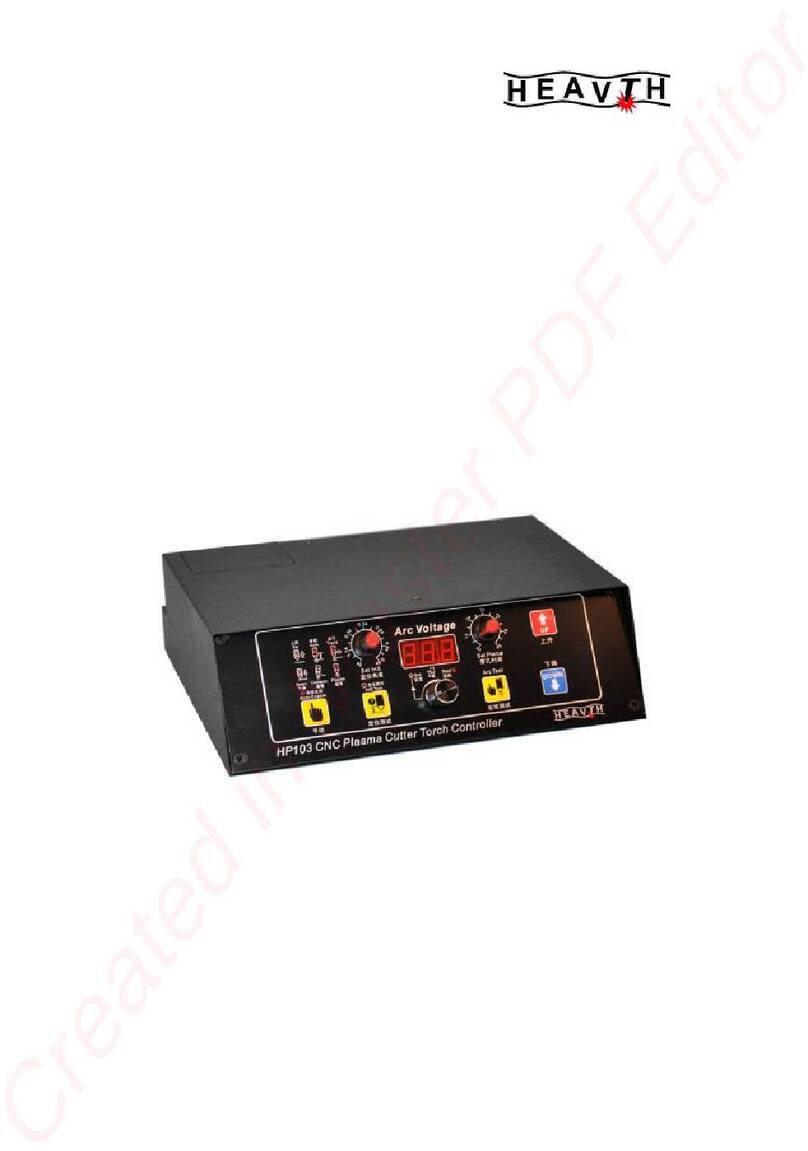Steiel S503 Series User manual

MICROPROCESSOR-BASED
CONTROLLERS
S503
Series
TECHNICAL MANUAL
STEIEL Elettronica S.r.l. – Viale Europa, 24 – 35020 Ponte San Nicolò – PADOVA ITALY
Certified Company, according to UNI EN ISO 9001 standards

S503_r2.1 – 09/2022 Page 2
WARNINGS
This manual is dedicated to the technical personnel responsible of the installation,
management and maintenance of the plants. The manufacturer assumes no responsibility
for damages or malfunctions occurring after intervention by non-authorized personnel, or not
compliant with the prescribed instructions.
Before performing any maintenance or repair action, ensure that the system is electrically
and hydraulically insulated.
Dispose of waste material and consumables accordingly with local regulations.
The manufacturer can modify the instrument or the technical manual without advanced notice.
WARRANTY
All our products are warranted for a period of 12 months from the delivery date.
Warranty is not valid if all instructions of installation, maintenance and use, are not strictly followed by the user.
Local regulations and applicable standards have also to be followed.

S503_r2.1 – 09/2022 Page 3
TABLE OF CONTENTS
PACKING LIST ......................................................................................................................................4
INTRODUCTION AND PRINCIPLE OF OPERATION............................................................................4
DESCRIPTION OF THE FRONT PANEL...............................................................................................4
TECHNICAL DATA ................................................................................................................................5
MECHANICAL DIMENSIONS................................................................................................................5
ELECTRICAL CONNECTIONS..............................................................................................................6
START-UP.............................................................................................................................................7
CONFIGURATION.................................................................................................................................7
LIST OF PARAMETERS........................................................................................................................8
MEANING OF PARAMETERS...............................................................................................................9
TEMPERATURE COMPENSATION ....................................................................................................12
ADDITIONAL VISUALIZATIONS .........................................................................................................12
CONTROL EXAMPLES .......................................................................................................................13
ERRORS .............................................................................................................................................14
PH INPUT SPECIFICATIONS .............................................................................................................15
ELECTRICAL CONNECTIONS FOR pH-METER ................................................................................ 15
ELECTROCHEMICAL CALIBRATION OF pH-METER ........................................................................15
ORP INPUT SPECIFICATIONS...........................................................................................................16
ELECTRICAL CONNECTIONS OF ORP-METER................................................................................ 16
ELECTROCHEMICAL CALIBRATION .................................................................................................16
CONDUCTIVITY INPUT SPECIFICATIONS........................................................................................17
ELECTRICAL CONNECTIONS OF CONDUCTIVITY METER ............................................................. 17
ELECTRICAL CALIBRATION ..............................................................................................................17
ELECTROCHEMICAL CALIBRATION .................................................................................................17
TEMPERATURE INPUT SPECIFICATIONS .......................................................................................18
ELECTRICAL CONNECTIONS OF THERMOMETER ......................................................................... 18
THERMOMETER CALIBRATION ........................................................................................................18
STANDARDIZED INPUT SPECIFICATIONS ......................................................................................19
ELECTRICAL CONNECTIONS OF THE STANDARDIZED INPUT......................................................19
ELECTRICAL CALIBRATION ..............................................................................................................19

S503_r2.1 – 09/2022 Page 4
PACKING LIST
1. Instrument
2. Technical manual
3. Mounting brackets (2 pcs.) for panel installation
4. Ferrites (2 pcs. – part no. 5062.0020)
INTRODUCTION AND PRINCIPLE OF OPERATION
The S503 instruments are microprocessor-based digital devices, designed for panel installation.
All models feature 2 relay outputs (settable as set-points or alarm thresholds), one current output
completely configurable and galvanically insulated. All outputs may be temporary deactivated (e.g.
during maintenance) through the ON button. Alarms and errors are shown directly on the display, and
calibration and configuration data are saved into the non-volatile memory for at least 10 years.
The S503 series includes several models, for measuring the following parameters:
pH / ORP
Conductivity
Indicator (model with standardized input)
All models feature a temperature input for Pt100 sensor, for temperature measurement and
compensation of the pH and conductivity readings.
DESCRIPTION OF THE FRONT PANEL
ON key Enable / disable output relays
CAL key Allow to enter configuration and calibration modes
[+] key While in normal mode, show the "GAIN" value (amplification factor); in calibration
mode increase the displayed value
[-] key While in normal mode, show the "OFFSET" value (deviation from zero); in
calibration mode decrease the displayed value
NEXT key While in normal mode, toggle between main measure and temperature readings;
in calibration mode exit without saving the new calibration data
LED K1 LED ON = K1 relay ON = contact closed
LED K2 LED ON = K2 relay ON = contact closed
LED ON Light ON (fix) means instrument ON and no anomalies; blinking light indicates
malfunction or outputs disabled through the ON button
Display While in normal operation mode, displays measurement and temperature value.
If no temperature probe is connected, shows the value set in parameter P04,
within brackets.

S503_r2.1 – 09/2022 Page 5
TECHNICAL DATA
Common characteristics for all models
Power supply 100-240 V~ 50/60 Hz (24V~, 24V- upon request)
Power Consumption 5 VA max
Protection 5x20 fuse that can be accessed from the rear panel,
24 V~ F 250 mA; 100-240 V~ F 100 mA
Display 2-row, alphanumeric LCD (8 digits per row), with backlight
Analogue Input precision better than 0.3% FS / repeatability better than 0.2% FS
(electronics only)
Temperature Input removable, 2-pole terminal block, for connection of Pt100 sensor
Relay Output 2 independent outputs on removable, 5-pole terminal block; contact max
load: 250 V~, 3 A resistive
Current Output 0/4-20 mA (selectable through software), 600 Ωmax load, 0.5% FS max
error; galvanic insulation from inputs
Environment storage temperature -20 to +60 °C
operating temperature -10 to +50 °C
RH max 90% noncondensing
Casing for panel installation with mounting brackets
Materials NORYL body, polyester front panel
Protection rate IP42 without protection; IP54 with optional protection
Dimensions instrument: DIN 96 x 96 x 115 mm; drilling template: 90 x 90 mm
Weight approx. 400 g
Analogic input, depending on model
pH / ORP Input removable, 4-pole terminal block (coaxial cable + reference);
input impedance > 10^12 Ω
Conductivity Input removable terminal block for cell with 2 electrodes + shield
Standardised Input removable, 4-pole terminal block (specify input type, range and
transducer power supply)
MECHANICAL DIMENSIONS
Note: all dimensions are in mm.
96
90
1
15
96
S503
90

S503_r2.1 – 09/2022 Page 6
ELECTRICAL CONNECTIONS
For correct electrical connections always refer to the rear panel pad printing.
The difference among different models is the input signal terminal block (pins 3, 4 and 5), while the
remaining connections are the same for all models.
POWER: connect to these terminals (17, 18 19) the external power supply, accordingly with voltage
technical specifications indicated on the instrument label; max tolerance ±10% ; in case of 24V-
power supply, N=negative and F=positive
K1: relay output: voltage-free contact, terminals 12 and 13
K2: relay output: voltage-free contact, terminals 15 and 16
LEV: digital input (terminals 1 and 2); accept voltage-free contact; when the contact is closed, after
a proper delay, the outputs are disabled and the status is shown on the display
mA: current output, terminals 8 (positive) and 9 (negative)
ELETTR or CELLA: measure input, terminals 3, 4 and 5; for connections refer to the specific
sections; the maximum cable length depends on the sensor type (20 m for pH or ORP, 5 m for low
conductivity measurements, 10 m for medium-high conductivity, 60 m for standardised inputs using
shielded cables); perform wiring while keeping signal and power cables separated; if using cables
with additional shield, connect the shield to the REF terminal (never short-circuit the grounding with
REF terminal!)
PT100: temperature input (terminals 6 and 7), for connecting a Pt100 probe (if a sensor with cable
longer than 5 meters is required, it is recommended to use a 2-wire cable + shield; connect the
shield to terminal 3)
Warning! Before performing any connection, check that the meter is not powered!
Notes:
•The maximum load for relay outputs is 3 A and 250 Vac resistive; with inductive load the maximum
current is 1 A (with a 230 Vac power supply voltage it is possible to directly drive pumps or solenoid
valves up to 200 VA).
•The output relay contacts are not protected: insert a fuse or other protection system appropriate for
the load.
•In case of inductive load, the output should be protected with appropriate system for arc and
interference suppression (RC nets or varistors in AC, diodes or varistors in DC).

S503_r2.1 – 09/2022 Page 7
For a correct functioning of the device even in bad interference conditions, it is recommended to
proceed as follows:
a) insert one of the supplied ferrites on the power supply cable as shown in the below picture
b) connect the shield of the signal cable to the grounding or to the REF terminal
c) insert the second supplied ferrite on the input signal cable as shown in the below picture
d) connect RC suppressors (or similar) in parallel with the load (properly dimensioned)
e) check the correct grounding connection of the electric cabin that contains the instrument
f) if the cable connected to the current output is longer than 20 meters, use shielded cable
Make one or two turns (depending on the cable section) around the ferrite.
Note: The instrument is supplied with two ferrites, one for the power cable and one for the input signal cable. In
the case of a second input (temperature) with separate cable from that of the main input, order a third ferrite.
START-UP
At start-up S503 performs a quick test of the display switching on all the segments, then shows the
instrument/software version code, checks the memory status, and displays error or advice codes (if
present). For details, see “ERRORS” section.
After completing the start-up operations, the device enters the normal operating mode, displays main
measurement and temperature, and updates accordingly the current and relay outputs.
If at start-up the [+] and [-] keys are pressed simultaneously, the device runs a simulation program: “0”
is displayed and the LED ON blinks. This value simulates the measurement and can be adjusted with
the [+] and [-] keys, for testing the functioning and configuration of the current and relay outputs. To exit
the simulation mode, press NEXT.
CONFIGURATION
This section describes the operating procedure for configuring editable parameters from the keyboard.
1) Press and hold the CAL key for at least 2 seconds to enter
configuration/calibration mode
2) Press NEXT to start the configuration
3) Release the and the display will show the first editable
parameter
4) Use the [+] and [-] keys to go to the next/previous parameter,
or press CAL to move the cursor on the parameter value;
modify the value with the [+] and [-] keys
5) Press CAL to confirm the modification or next to proceed
without saving
6) Now the display shows the next parameter
7) Proceed as explained at steps 4 and 5 for setting all the
parameters
8) To exit the configuration mode, press NEXT
9) If no key is pressed, after a few seconds the instrument will automatically quit the configuration mode
E
D
I
T
I
N
G
C
A
L
I
B
R
.
E
D
I T
I N
G
P
A
R
A
M
.
#
M
E
A
T
Y
P
E
0
1
M
E
A
T
Y
P
E
#
0 1
2-pole + ground (Y/G)
cable from mains To the power
supply terminals
on S503
Ferrite (part number 5062.0020)

S503_r2.1 – 09/2022 Page 8
LIST OF PARAMETERS
It is recommended to fill the last column with the values set for your application.
Model with pH / ORP or mA input
PAR. Description Min
value
Max
value
Default
value
Set
value
P01
Measure type
0
2
0
P02
Reserved
0.00
0.00
0.00
P03
Reserved
0
1
0
P04
Working temperature
0
100
25 °C
P05
Working mode for K1
0
2
1
P06
Minimum threshold for K1 relay
-
1000
2000
6.00 pH
P07
Maximum threshold for K1 relay
-
1000
2000
6.30 pH
P08
Energizing delay for K1 relay
0
120
0 sec
P09
De
-
energizing delay for K1 relay
0
120
0 sec
P10
Working mode for K2
0
5
1
P11
Minimum threshold for K2 relay
-
1000
2000
6.50 pH
P12
Maximum threshold for K2 relay
-
1000
2000
6.80 pH
P13
Energizing delay for K2 relay
0
120
0 sec
P14
De
-
energizing relay for K2 relay
0
120
0 sec
P15
Starting delay
0
60
0 min
P16
mA output type
0
1
1
P17
Starting value for mA output
-
1000
2000
0.00 pH
P18
Full scale value for mA output
-
1000
2000
14.00 pH
P19
Fault mA value
0.0
21.0
21.0 mA
P20
Password
0
999
0
P2
1
Auto
-
set
0
100
0
(P2
2
)
Starting value for meas
.
1
(mA model only)
-
1000
2000
0
(P2
3
)
Full scale value for meas
.
1
(mA model only)
-
1000
2000
2000
(P24) Decimal point position + measure unit (mA
model only)
0 51 0
Conductivity meter version
PAR. Description Min
value
Max
value
Default
value
Set
value
P01
Conductivity meter type (range)
0
25
23
P02
Temp. compensation coefficient
0.00
4.00
2.00
P03
Reference temperature
0
100
25 °C
P04
Working temperature
0
100
25 °C
P05
Working mode for K1
0
2
1
P06
Minimum threshold for K1 relay
-
1000
2000
70.0 µS
P07
Maximum threshold for K1 relay
-
1000
2000
80.0 µS
P08
Energizing delay for K1 relay
0
120
0 sec
P09
De
-
energizing delay for K1 relay
0
120
0 sec
P10
Working mode for K2
0
5
1
P11
Minimum threshold for K2 relay
-
1000
2000
85.0 µS
P12
Maximum threshold for K2 relay
-
1000
2000
95.0 µS
P13
Energizing delay for K2 relay
0
120
0 sec
P14
De
-
energizing relay for K2 relay
0
120
0 sec
P15
Starting delay
0
60
0 min
P16
mA
output type
0
1
1
P17
Starting value for mA output
-
1000
2000
0.00
P18
Full scale value for mA output
-
1000
2000
199.9 µS
P19
Fault mA value
0.0
21.0
21.0 mA
P20
Password
0
999
0
P21
Auto
-
set
0
100
0

S503_r2.1 – 09/2022 Page 9
MEANING OF PARAMETERS
PARAMETER 01 (pH / ORP) MEASURE TYPE
This model configured and calibrated for pH, ORP or temperature measurements, can be set as follows:
0 = pH-meter, 1 = ORP meter, 2 = thermometer.
PARAMETER 01 (Conductivity) CONDUCTIVITY METER TYPE
Set this parameter to choose the desired measurement range and cell constant:
Cell
constant (K)
Range P0
1
Range P01 Range P01 Range P01
K = 10 cm 2 µS/cm 1 20 µS/cm 2 200 µS/cm 3 2000 µS/cm 4
K = 1 cm 20 µS/cm 6 200 µS/cm 7 2000 µS/cm 8 20 mS/cm 9
K = 0.1 cm 200 µS/cm 11 2000 µS/cm 12 20 mS/cm 13 200 mS/cm 14
K = 0.01 cm 2000 µS/cm 16 20 mS/cm 17 200 mS/cm 18 2000 mS/cm 19
K = 5 cm 2 µS/cm 21 20 µS/cm 22 200 µS/cm 23 2000 µS/cm 24
If the parameter is set with a value not included in the above table, the instrument will not function
properly.
PARAMETER 01 (mA input) MEASURE TYPE
P01=0 set the analogue input at 0-20 mA.
P01=1 set the analogue input at a 4-20 mA.
PARAMETER 02 (pH / ORP, mA input) RESERVED
Reserved parameter, for future use.
PARAMETER 02 (Conductivity) TEMP. COMPENSATION COEFFICIENT αT
S503 performs the temperature compensation accordingly with the following equation:
αT
C(t) = C(tref) * 1 + ─── * (t – tref)
100
where: t = measured (or set) temperature, °C
tref = reference temperature, °C (typically set at 25°C, parameter P03)
αT = temperature compensation coefficient, %/°C (parameter P02)
Typical αT values: 1.0 to 1.6 %/°C for acid solutions
1.8 to 2.2 %/°C for alkaline solution
2.2 to 3.0 %/°C for salt solution
approx. 2.0 %/°C for water
Anyway, the αT coefficient is not constant over all the standard temperature compensation range, but
only for small temperature variations (e.g. 20 to 50°C).
Set αT = 0 means disabling the temperature compensation feature.
If the αT value is unknown, it may be determined as follows:
1) set αT (P02) = 0.00 (no temperature compensation)
2) read the conductivity value of the tested liquid at the reference temperature (e.g. 25°C)
3) bring the liquid at the working temperature
4) read the conductivity value at this temperature
5) calculate the αT (P02) value with the below equation:
C(t) – C(tref) 100
αT = ───────── x ─────
t – tref C(tref)
6) set the P02 parameter with the calculated value

S503_r2.1 – 09/2022 Page 10
PARAMETER 03 (pH / ORP, mA input) RESERVED
Reserved parameter, for future use.
PARAMETER 03 (Conductivity) REFERENCE TEMPERATURE
See description of parameter P02.
PARAMETER 04 WORKING TEMPERATURE
All the S503 models are designed for measuring temperature and use this value for temperature
compensation (when required). If no temperature probe is connected, the working temperature value
can be manually entered. In this case the set value is displayed within brackets.
PARAMETER 05 WORKING MODE OF RELAY K1
The K1 relay output cam work in 3 different modes:
0 = Relay output is disabled.
1 = Relay contact is closed when the set thresholds are exceeded; this mode is used for acidifying (pH-
meter version), lowering the ORP value, lowering the conductivity value, etc.
2 = Contact is open when the set thresholds are exceeded; this mode is use for increasing the pH level,
chlorinating (ORP-meter), adding substances for increasing the conductivity level, etc.
PARAMETER 06 MIN THRESHOLD FOR RELAY K1
Minimum threshold value for relay K1 action.
PARAMETER 07 MAX THRESHOLD FOR RELAY K1
Maximum threshold value for relay K1 action.
PARAMETER 08 ENERGIZING DELAY FOR RELAY K1
This parameter allows to enter a delay time (in seconds) for energizing relay K1, if it is configured with
working type option 1 or 2. Entering zero will skip delay and the relay is activated immediately.
PARAMETER 09 DE-ENERGIZING DELAY FOR RELAY K1
This parameter allows to enter a delay time (in seconds) for de-energizing relay K1, if it is configured with
working type option 1 or 2. Entering zero will skip delay and the relay is de-activated immediately.
PARAMETER 10 WORKING MODE OF RELAY K2
The K2 relay output can work in 6 different modes:
0 = Relay disabled.
1 = Contact is closed when the set thresholds are exceeded.
2 = Contact is open when the set thresholds are exceeded.
3 = NC (normally closed) alarm, i.e. K2 contact is closed when measurement is within the set thresholds
(P11 e P12).
4 = NO (normally open) alarm, i.e. K2 contact is open when measurement is within the set thresholds
(P11 e P12).
5 = Automatic cleaning cycle: at set time intervals, the instrument freezes measurement and the relay
K2 closes. For example: Pause time = 1-2 hours = 60-120 minutes, Cleaning = 10 seconds;
Measure hold = 60 seconds (time needed to discharge the dirty water and return to correct
measurement).
The below diagram shows the functioning of the automatic cleaning mode.
P10=5
K2
measure
hold
Parameter
P11 P12 P13 P11 P12 P13
pause
time
cleaning
time
measure hold pause
time
cleaning
time
measure hold

S503_r2.1 – 09/2022 Page 11
PARAMETER 11 MIN THRESHOLD FOR RELAY K2
Minimum threshold value for relay K2 action. If P10=5 (cleaning cycle), this parameter is used to set the
pause time (minutes) between two subsequent cleaning cycles.
PARAMETER 12 MIN THRESHOLD FOR RELAY K2
Maximum threshold value for relay K2 action. If P10=5 (cleaning cycle), this parameter is used to set the
cleaning time (seconds).
PARAMETER 13 ENERGIZING DELAY FOR RELAY K2
Energizing delay for relay K2 (seconds). If P10=5 (cleaning cycle), this parameter is used to set the time
(seconds) with frozen measurement after the cleaning cycle has been completed, before returning to
normal operations.
PARAMETER 14 DE-ENERGIZING DELAY FOR RELAY K2
De-energizing delay for relay K2 (seconds).
PARAMETER 15 STARTING DELAY
The sensor connected to the measure input may require a stabilization time before measuring reliable
values, but anyway outputs are activated accordingly with readings. This parameter allows to enter a
proper time delay (minutes), for waiting for sensor stabilization. Setting the parameter to zero means
disabling this function.
PARAMETER 16 CURRENT OUTPUT TYPE
This parameter allows to choose the current output range:
0 = 0-20 mA; 1 = 4-20 mA.
Note: The precision for the current output refers to values greater than 0.3 mA (approx.). Note that the
low values for the 0-20 mA output are quite approximate.
PARAMETER 17 STARTING VALUE FOR CURRENT OUTPUT
Measure value corresponding to the starting value of the current output (0 or4 mA).
PARAMETER 18 FULL SCALE VALUE FOR CURRENT OUTPUT
Measure value corresponding to the full scale of the current output (20 mA).
PARAMETER 19 FAULT CURRENT OUTPUT
This parameter is used to enter the output current value when an error occurs (e.g. reading out of range,
measurement disabled, etc.).
PARAMETER 20 PASSWORD
The user can enter a protection password to avoid intervention by non-authorized personnel.
Warning! If the password is forgotten, the instrument has to be sent back to the factory for a
complete re-configuration!
PARAMETER 21 AUTOSET
This parameter allows to restore the factory settings. Enter “12” and the display will show the “Autoset
eseguito! (completed!)” message for 3 seconds, then the device returns to normal operating mode.
(PARAMETER 21) STARTING VALUE FOR MEASURE 1
This parameter is available only for model with mA input and represents the value corresponding to 0
or 4 mA, depending on the output type set. The parameter is factory set accordingly with customer
indications and should not be modified!
(PARAMETER 23) FULL SCALE VALUE FOR MEASURE 1
This parameter is available only for model with mA input and represents the value corresponding to the
full scale (20 mA). The parameter is factory set accordingly with customer indications and should not
be modified!

S503_r2.1 – 09/2022 Page 12
(PARAMETER 24) DECIMAL POINT POSITION AND MEASURE UNIT FOR MEAS.1
This parameter is available for models with mA input and allows to set the decimal point position on
display and the desired measure unit, accordingly with the following formula:
P24 = (Measure unit code x 8) + Decimal point position
Codified measure unit are listed in the table below:
0 = 1 = pH 2 = mV 3 = °C 4 = ppm 5 = uS 6 = mS 7 = % 8 = mA
9 = pulse
10 = sec
11 = min
12 = %/°C
13 = V
14=mbar
15 = bar
16 = cm
17 = m
18 = FTU
19 = NTU 20 = l/h 21 = m
3
/h
Example: 4-20 mA input from remote conductivity meter with measure range 0…50.0 mS/cm:
P1 = 1 ; P22 = 0 ; P23 = 500 ; P24 = (6x8)+1 = 49
Normally this parameter is factory set accordingly with customer indications. Do not attempt to modify
this value!
Note: In case of proportional control on the current output, choose starting and full scale values far
enough to prevent calculation errors in the proportional control. The minimum difference between the
two thresholds is 20 points (e.g. 0.20 pH for pH-meter). Also see the “Errors” section.
TEMPERATURE COMPENSATION
The temperature compensation (for pH and conductivity measurements) is calculated using the
temperature value measured through the dedicated input. If this input is not connected, the S503
controller will use the working temperature value set in the parameter P04.
ADDITIONAL VISUALIZATIONS
Pressing the [+] and [-] keys while in normal mode, the following values are displayed:
pH meter key [+] gain factor (0.667 to 1.428)
key [-] offset, pH units at 25°C (-1.50 to 1.50)
ORP meter key [+] gain factor (1.000 – fix)
key [-] offset (-150 to 150 mV)
Thermometer key [+] gain factor (0.900 to 1.100)
key [-] offset (-5.0 to +5.0°C)
Conductivity meter key [+] gain factor (0.750 to 1.500)
key [-] offset (-100 to 100 points)
Std. input key [+] gain factor (0.500 to 2.000)
key [-] offset (-200 to 200 points)
Note: The first calibration settings are OFFSET = 0, GAIN = 1.000.
Pressing the [+] and [-] keys simultaneously, the display shows the ON-OFF time for relay K1 set for
proportional control.

S503_r2.1 – 09/2022 Page 13
CONTROL EXAMPLES
This section includes some configuration examples of control parameters:
1) Acidification control to have approximately pH 7.40
MEASURE TYPE = 0 (pH meter) (P01 = 0)
WORKING MODE FOR K1 = 1 (closed when thresholds are exceeded) (P05 = 1)
It is recommended to set a narrow threshold window, e.g.:
MIN THRESHOLD = 7.30 pH (P06 = 7.30pH)
MAX THRESHOLD = 7.50 pH (P07 = 7.50pH)
The relay K1 starts acidification when the pH level is greater than 7.50 and de-activates as soon as the
pH level falls below the 7.30 threshold.
The relay K2 can be configured as alarm:
WORKING MODE FOR K2 = 3 (NC alarm) (P10 = 3)
MIN THRESHOLD = 6.50 pH (P11 = 6.50pH)
MAX THRESHOLD = 8.50 pH (P12 = 8.50pH)
2) Control of the swimming pool chlorination using an ORP electrode, to have an approximate free
chlorine level of 0.80 ppm. Using a photometer, analyze the water to obtain the ORP value of the
water when the free chlorine concentration is 0.80 ppm; for example ORP=696 mV:
MEASURE TYPE = 1 (ORP-meter) (P01 = 1)
WORKING MODE FOR K1 = 2 (open when thresholds are exceeded) (P05 = 2)
MIN THRESHOLD = 675 mV (P06 = 675 mV)
MAX THRESHOLD = 695 mV (P07 = 695 mV)
In these conditions, the relay K1 activates when the ORP level falls below 675 mV, and deactivates for
values greater than 695 mV.
3) Conductivity control of water exiting from a demineralization plant, and alarm signal (or triggering of
a resin regeneration cycle) if measurement is greater than 12.00 µS/cm
CONDUCTIVITY METER TYPE = 22 (19.99 µS/cm, K=5cm) (P01 = 22)
WORKING MODE FOR K1 = 1 (closed when thresholds are exceeded) (P05 = 1)
MIN THRESHOLD = 12.00 µS/cm (P06 = 12.00µS/cm)
MAX THRESHOLD = 12.00 µS/cm (P07 = 12.00µS/cm)
ENERGIZING DELAY = 60 sec (P08 = 60 sec)
DE-ENERGIZING DELAY = 0 sec (P09 = 0 sec)
The relay K1 is activated (and alarm is generated or the regeneration cycle is triggered) when
measured conductivity is greater than 12.00 µS/cm, and the value is kept for at least one minute (60
sec). This delay avoids erroneous actions due to instantaneous peaks or signal noise.

S503_r2.1 – 09/2022 Page 14
ERRORS
When an error is detected, the LED ON starts blinking, the mA output provides the fault current value set
in P19, and the display shows the corresponding error message, as listed here below:
WARNING 1 - RELAY K1 DISABLED
No working mode has been configured for K1 output, but the instrument works normally.
WARNING 2 - RELAY K2 DISABLED
No working mode has been configured for K2 output, but the instrument works normally.
ERR. 2 CURRENT OUTPUT
The maximum and minimum threshold values for the mA output (P17 and P18) are too close. The
current output will not work correctly. Enter new values for parameters P17 and P18.
CALIBRATION ERROR!
The requested calibration cannot be performed. Check probe and connection cable; repeat the
procedure.
UR/OR
Under Range / Over Range: the input signal is greater than the full scale value, or lower than the
minimum value of the measurement range. Check sensor and cable. When this error occurs, the
instrument outputs are disabled.
Auto Clean
This is not an error message, but an indication that the automatic cleaning is in progress; while
this message is displayed, measurement is frozen at the value read before the cycle start.

S503_r2.1 – 09/2022 Page 15
pH INPUT SPECIFICATIONS
ELECTRICAL CONNECTIONS FOR pH-METER
The signal comes from the electrode through a coaxial cable, with maximum recommended length of
20 meters (for longer cables, please contact the manufacturer).
The electrode input is on removable terminal block: connect the coaxial cable core to terminal 4, and
the shield to terminal 5 (Note: remove any black conductive plastic between the core and shield of the
cable).
If two separate electrode are used for measure and reference, connect the reference electrode to
terminal 3 (REF).
The Pt100 temperature sensor should be connected to terminals 6 and 7. If no sensor is connected,
the instrument uses a constant temperature of 25.0°C. If a Pt100 probe is used, immerse it into the
liquid to be tested, close to the electrode or anyway at the same temperature. If a 3-wire Pt100 sensor
is used, connect the 2 wires of the same colour at the same terminal (the wires are internally short
circuited).
It is recommended to keep signal cables away from power cables.
ELECTROCHEMICAL CALIBRATION OF pH-METER
Before starting this procedure, ensure to have fresh buffer solutions (not expired). If temperature
compensation is used, immerse the Pt100 probe into the buffer solutions together with the measure
electrode.
1) Rinse the electrode with distilled water
2) Immerse the electrode in pH 7.01 buffer solution
3) Press and hold CAL for at least 2 seconds to enter the calibration
mode
4) Press [-] and the OFFSET message is displayed; release the
button and the display will show the buffer pH value,
automatically recognized
5) If necessary, adjust the value using the [+] or [-] key
6) Confirm calibration by pressing CAL, or press NEXT to exit
without saving (the previous calibration data are kept)
7) Rinse the electrode with distilled water
8) Immerse the electrode in pH 4.01 (or pH 9.01) buffer solution
9) Press and hold CAL for at least 2 seconds to enter the calibration
mode
10) Press [+] and the GAIN message is displayed; release the button
and the display will show the buffer pH value, automatically
recognized
11) If necessary, adjust the value using the [+] or [-] key
12) Confirm calibration by pressing CAL, or press NEXT to exit
without saving (the previous calibration data are kept)
The instrument does not automatically recognizes the buffer pH values whenever:
a) The buffer solution is contaminated dirty or expired
b) The electrode is not working properly or it is exhausted
c) The electrode connection cable is damaged
Note: If you attempt to calibrate the offset at a pH value too different from pH 7, or to calibrate the gain
with a buffer solution too close to pH neutrality, the instrument shows the “CALIBRATION ERROR!”
message and does not save the calibration data.
E
D
I
T
I
N
G
C
A
L
I
B
R
.
O
F
F
S
E
T
C
A
L
I
B
R
.
O
F
F
S
E
T
7
.
0
1
p
H
E
D
I
T
I
N
G
C
A
L
I
B
R
.
G
A
I
N
C
A
L
I
B
R
.
G
A
I
N
4
.
0
1
p
H

S503_r2.1 – 09/2022 Page 16
ORP INPUT SPECIFICATIONS
ELECTRICAL CONNECTIONS OF ORP-METER
The signal comes from the electrode through a coaxial cable, with maximum recommended length of
20 meters (for longer cables, please contact the manufacturer).
The electrode input is on removable terminal block: connect the coaxial cable core to terminal 4, and
the shield to terminal 5 (Note: remove any black conductive plastic between the core and shield of the
cable).
If two separate electrode are used for measure and reference, connect the reference electrode to
terminal 3 (REF).
If temperature measurement is also required, connect a Pt100 temperature sensor to terminals 6 and
7. If a 3-wire Pt100 sensor is used, connect the 2 wires of the same colour at the same terminal (the
wires are internally short circuited).
It is recommended to keep signal cables away from power cables.
ELECTROCHEMICAL CALIBRATION
Before starting the procedure, check to have a fresh calibration solution (not expired).
1) Rinse the electrode with distilled water
2) Immerse the electrode into the calibration solution (e.g. 230 mV)
3) Press and hold CAL for at least 2 seconds, to enter the calibration
mode
4) Press [-] and the OFFSET message is displayed; release the
button and the display will show the current measure
5) If necessary, adjust the value using the [+] or [-] key
6) Confirm calibration by pressing CAL, or press NEXT to exit
without saving (the previous calibration data are kept)
After performing the calibration, the meter does not display the standard solution value whenever:
a) The calibration solution is contaminated dirty or expired
b) The electrode is not working properly or it is exhausted
c) The electrode connection cable is damaged
Note: If you attempt to calibrate the offset at a value too different from the internal one, the instrument
shows the “CALIBRATION ERROR!” message and does not save the calibration data.
ORP calibration is a single point procedure (offset)!
E
D
I
T
I
N
G
C
A
L
I
B
R
.
O
F
F
S
E
T
C
A
L
I
B
R
.
O
F
F
S
E
T
2
4
3
m
V

S503_r2.1 – 09/2022 Page 17
CONDUCTIVITY INPUT SPECIFICATIONS
The electronic precision of the conductivity measurements is better than 0.3%, and the repeatability is
better than 0.2% FS, without temperature compensation (resistive calibration). The temperature
compensation introduces an additional error of 0.3% FS, and is performed through the PT100 input.
The temperature sensor may be a probe separated from the conductivity cell (e.g. PT100S), or a built-
in sensor (e.g. CCK5TC). For further details, refer to the technical documentation supplied with the cell.
ELECTRICAL CONNECTIONS OF CONDUCTIVITY METER
The signal comes from the 2-electrode cell, to be connected to terminals 4 and 5; if a shielded cable is
used, connect the shield to terminal 3 (GND). In case of low conductivity measurement, it is
recommended to use a shielded cable.
The Pt100 sensor input is at terminals 6 and 7. If no temperature probe is connected, the instrument
uses a constant working temperature of 25.0°C. If a Pt100 probe is used, immerse it in the liquid to be
tested, close to the cell or anyway at the same temperature.
To avoid interferences and measure errors due to parasitic capacity of the cable, it is recommended to
use a cell connection cable as short as possible. Do not extend the supplied cable; if a longer cable is
needed, please contact the manufacturer.
It is recommended to keep signal cables away from power cables.
ELECTRICAL CALIBRATION
To test the proper functioning of the instrument, connect to the cell input a resistive simulator. Set an
infinite resistor value and the meter should display “0”. To calculate the resistor value to be entered for
simulating a given conductivity value, use the following formula:
1 1 Rcell = simulation resistor
Rcell = ──────── MΩ= ─-──--───── Cond = conductivity value to be simulated
(Cond * K) (µS/cm * cm) K = cell constant
Notes:
•To verify the correct visualization, also consider the set “gain” factor. To view the gain value, press
the [+] key.
•The temperature should be approx. 25°C; if not, leave terminals 6 and 7 not connected.
ELECTROCHEMICAL CALIBRATION
The electrochemical calibration allows to compensate errors due to the cell-instrument connection cable
and to the mechanical error of the cell constant. If the temperature compensation feature is used,
immerse the Pt100 sensor into the solution close to the cell, or anyway at the same temperature.
1) Leave the cell in air
2) Press and hold CAL for at least 2 seconds to enter the calibration
mode
3) Press [-] and the “OFFSET” message is displayed, followed by
the 0.0 µS/cm value
4) If necessary, adjust this value using the [+] and [-] keys; the zero
value with cell in air is generally not adjusted
5) Press CAL to confirm calibration, or NEXT to exit without saving
6) Immerse the cell and the Pt100 probe (if used) into a solution at a known conductivity value; typically
a KCl solution (see table here below)
7) Press and hold CAL for at least 2 seconds to enter the calibration
mode
8) Press the [+] key and the “GAIN” message is displayed, followed
by the previously measured value
9) If necessary, adjust this value with the [+] and [-] keys
10) Press CAL to confirm calibration, or NEXT to exit without saving
O
F
F
S
E
T
0
0
u
S
O
F
F
S
E
T
C
A
L
I
B
R
.
G
A
I
N
C
A
L
I
B
R
.
G
A
I
N
1
4
1
3
u
S

S503_r2.1 – 09/2022 Page 18
Note: If you attempt to calibrate using an offset value too different from the range minimum value or a
gain value with a too low input signal, the instrument shows the “CALIBRATION ERROR!” message and
does not save the calibration data.
Conductivity values of KCl (potassium
chloride) solutions:
TEMPERATURE INPUT SPECIFICATIONS
ELECTRICAL CONNECTIONS OF THERMOMETER
The signal comes from a Pt100 sensor through a 2 or 3-wire cable, that has to be shielded if longer
than 15 meters. Connections are made on removable terminal block, at pins 6 and 7.
If a sensor with 3-wire cable is used, connect to the same terminal the two wires of the same colour
(internally short-circuited). If a shielded cable is used, connect the shield to terminal 3 (REF).
THERMOMETER CALIBRATION
The electronic calibration of the instrument and the accuracy class of the Pt100 sensor ensure a
maximum error of ±0.3°C at 0°C and ±0.8°C at 100°C (Pt100 class B, according to IEC 751 standard).
Therefore, no user calibration is required.
Note: Factory calibration is performed with a sensor with 2 m cable. Using a probe with a cable longer
than 2 meters could introduce a greater reading error.
Temp.
(°C)
KCl 1 N
(µS/cm)
KCl 0.1 N
(µS/cm)
KCl 0.01 N
(µS/cm)
0 65410 7150 776
5 74140 8220 896
10 83190 9330 1020
15 92540 10480 1147
16 94430 10720 1173
17 96330 10950 1199
18 98240 11190 1225
19 100160 11430 1251
20 102090 11670 1278
21 104020 11910 1305
22 105940 12150 1332
23 107890 12390 1359
24 109840 12640 1386
25 111800 12880 1413
26 113770 13130 1441
27 115740 13370 1468
28
13620 1496
29
13870 1524
30
14120 1552

S503_r2.1 – 09/2022 Page 19
STANDARDIZED INPUT SPECIFICATIONS
ELECTRICAL CONNECTIONS OF THE STANDARDIZED INPUT
The signal comes from the transmitter (or transducer) through a 2 or 3-pole cable, that has to be
shielded if longer than 20 meters.
Connections are made on removable terminal block as follows:
1. Active transmitter: terminal 3 = connect the positive (+) pole of the transmitter
terminal 4 = connect the negative (-) pole of the transmitter
2. Two-wire passive transmitter:
terminal 5 (power supply) = connect the positive (+) pole of the transmitter
terminal 3 = connect the negative (-) pole of the transmitter
Note: If a shielded cable is used, connect the cable shield to terminal 4 (S503 side).
ELECTRICAL CALIBRATION
Errors due to instrument (S503) and transducer are typically very small and no calibration is required.
However, in case of pressure transducer converted into piezometric levels, sometimes zero and gain
calibrations are needed; proceed as explained here below.
1) Set the transmitter to have the minimum range signal (e.g. 0 or 4 mA)
2) Press and hold CAL for at least 2 seconds to enter calibration
mode
3) Press the [-] key and the “OFFSET” message is displayed,
followed by the zero value
4) If necessary, adjust this value with the [+] and [-] keys
5) Press CAL to confirm calibration, or NEXT to exit without saving
6) Set the transmitter to have the full scale signal (or a signal
greater than the 70% of the range)
7) Press and hold CAL for at least 2 seconds to enter calibration
mode
8) Press the [+] key and the “GAIN” message is displayed, followed
by the previously measured value
9) If necessary, adjust this value with the [+] and [-] keys
10) Press CAL to confirm calibration, or NEXT to exit without saving
Note: If you attempt to calibrate using an offset value too different from the range minimum value or a
gain value with a too low input signal, the instrument shows the “CALIBRATION ERROR!” message and
does not save the calibration data.
O
F
F
S
E
T
2
.
3
m
O
F
F
S
E
T
C
A
L
I
B
R
.
E
D
I
T
I
N
G
C
A
L
I
B
R
.
E
D
I
T
I
N
G
C
A
L
I
B
R
.
G
A
I
N
C
A
L
I
B
R
.
G
A
I
N
3
8
.
7
m
Table of contents
Other Steiel Controllers manuals
Popular Controllers manuals by other brands
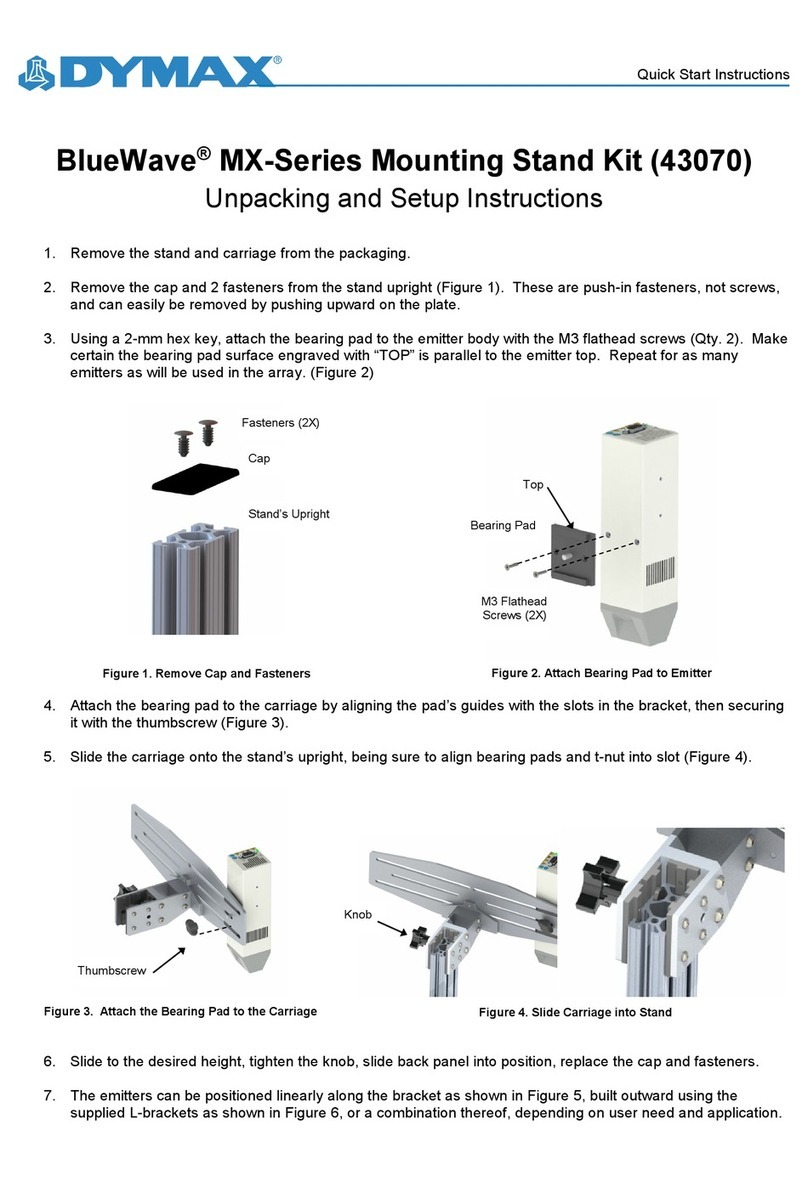
dymax
dymax BlueWave MX-Series Quick start instructions
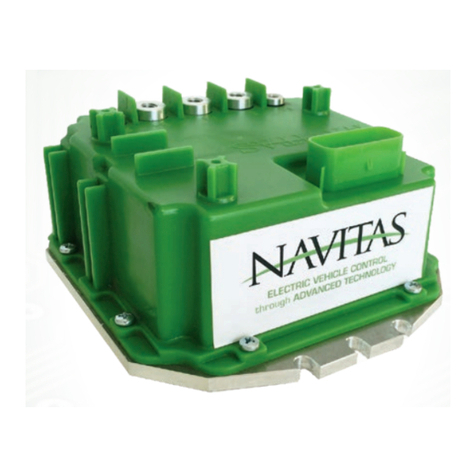
NAVITAS
NAVITAS 440A Installation & service manual

National Instruments
National Instruments IC-3173 user manual

Mitsubishi Electric
Mitsubishi Electric MELSEC iQ-R Series user manual
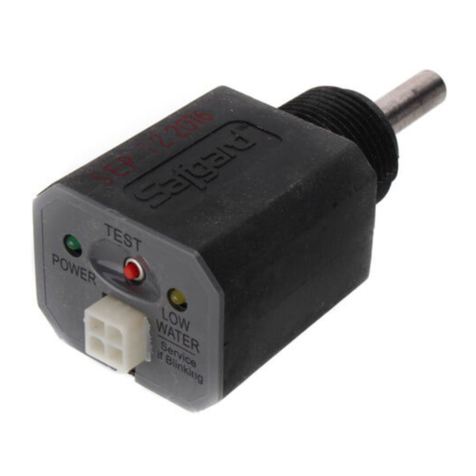
safgard
safgard 1100 instructions
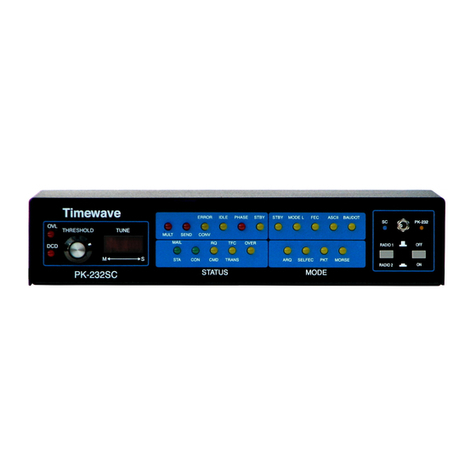
Timewave
Timewave PK-232SC Hardware installation manual

